Abstract
Human serum, human transferrin (TF), and the iron chelator 1,10-phenanthroline (OP) produce iron-reversible fungistatic activity which has been attributed to simple iron deprivation. In this study, the influence of the size of the inoculum on the inhibitory activity of serum, TF, and OP prepared with the same iron-binding capacity (2.5 micrograms/ml) for Rhizopus oryzae and Trichophyton mentagrophytes was examined. Inhibition was monitored in liquid microcultures maintained at 37 degrees C and pH 7.4 to 7.5 by measuring the change in absorbance density. Increasing the number of spores in the inoculum disrupted the fungistatic activity of serum and TF, but not that of OP. The dilution at which OP lost fungistatic activity was not affected by the number of spores in the inoculum and was the same for both fungi. The dilution at which TF and serum lost fungistatic activity was dependent upon both the quantity of the inoculum and the species of fungus. The number of viable spores, rather than the total number of spores in the inoculum, was determined to be important in overcoming the inhibition of fungal growth by serum and TF. The fungistatic activity of serum and TF could be diminished by the preexposure of the serum to viable but nongrowing spores. Direct and indirect fluorescence studies indicated that both T. mentagrophytes and R. oryzae absorbed TF. Glucose uptake by R. oryzae was inhibited by a 4-h exposure to 5.0 to 0.15 mg of apotransferrin per ml. These results suggest that the fungistatic activity of TF for R. oryzae and T. mentagrophytes may not be attributable to simple iron deprivation and raise the possibility of a requirement for a direct interaction.
Full text
PDF
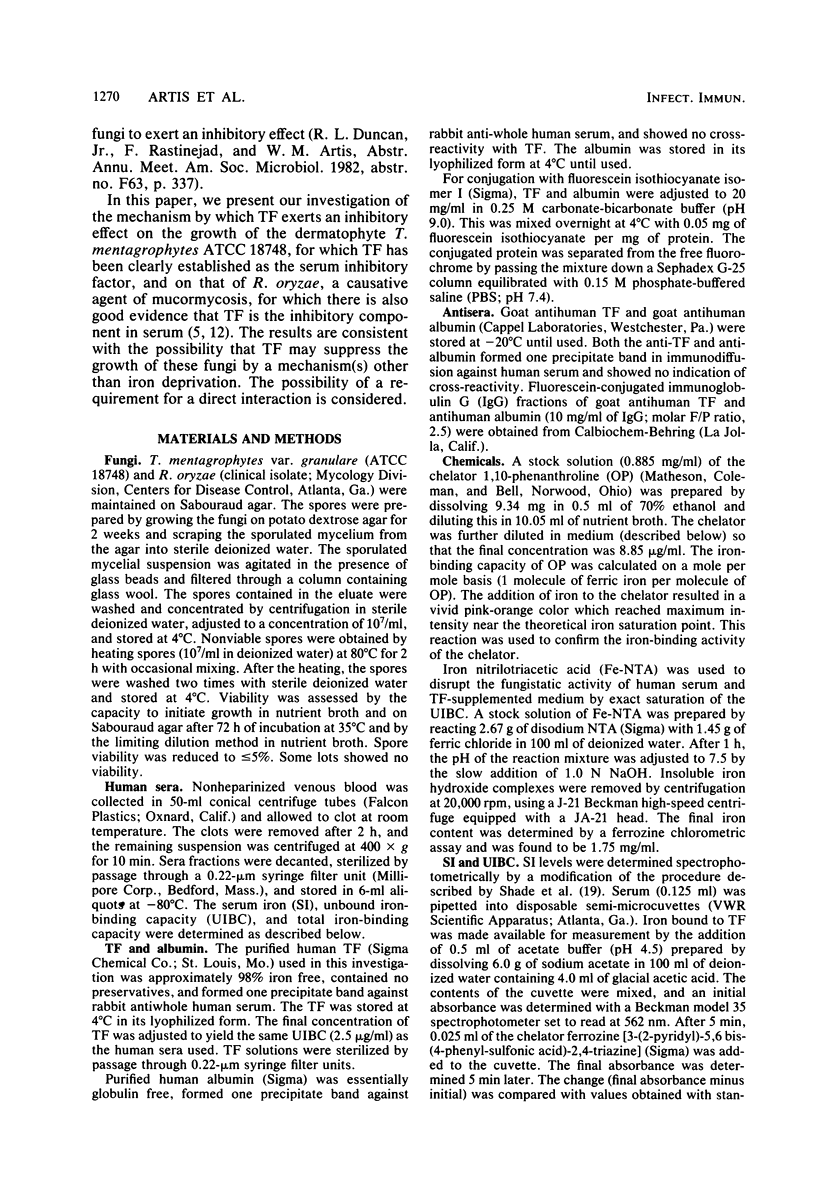
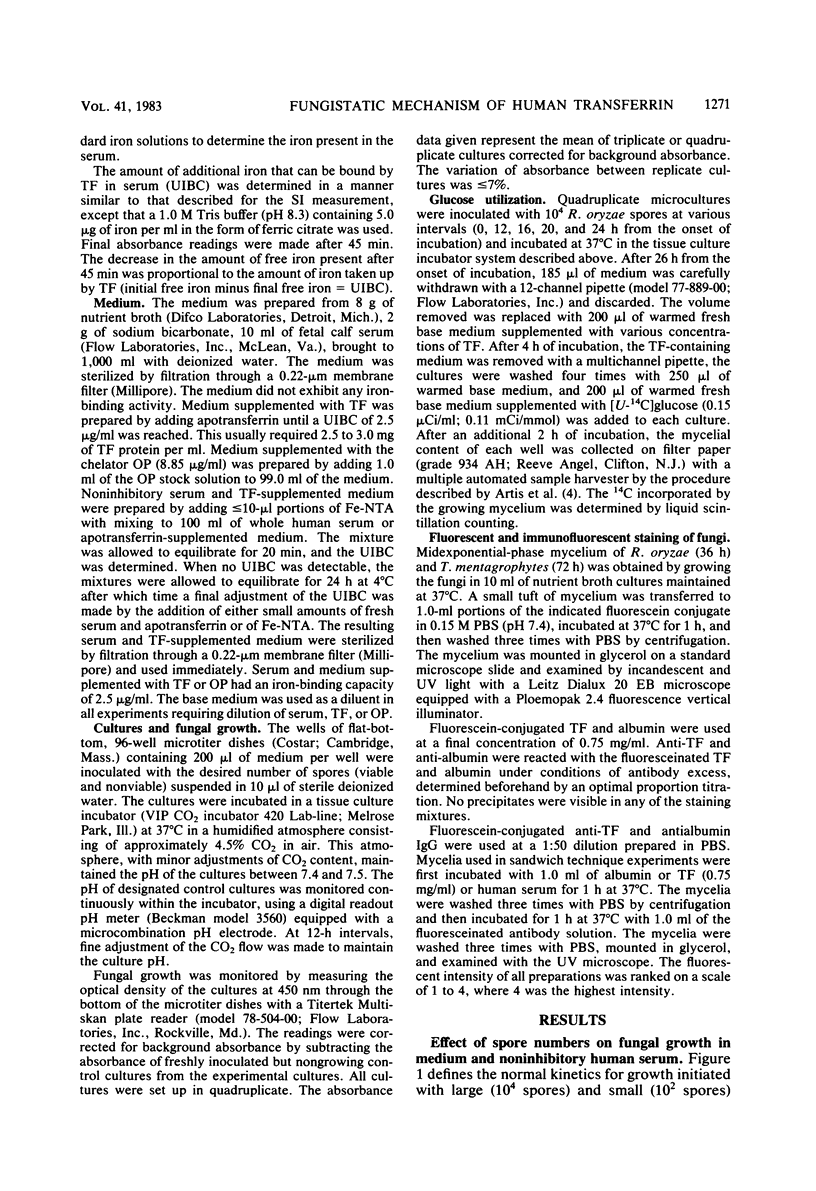
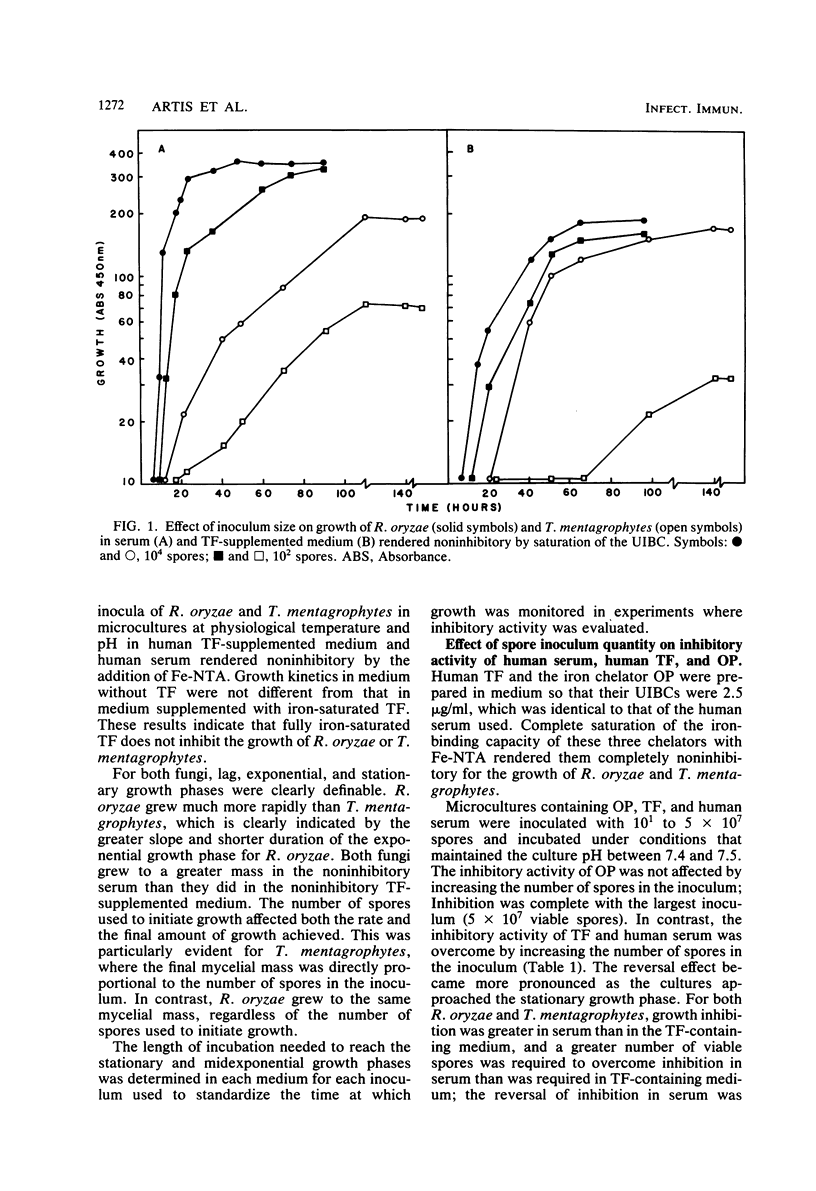
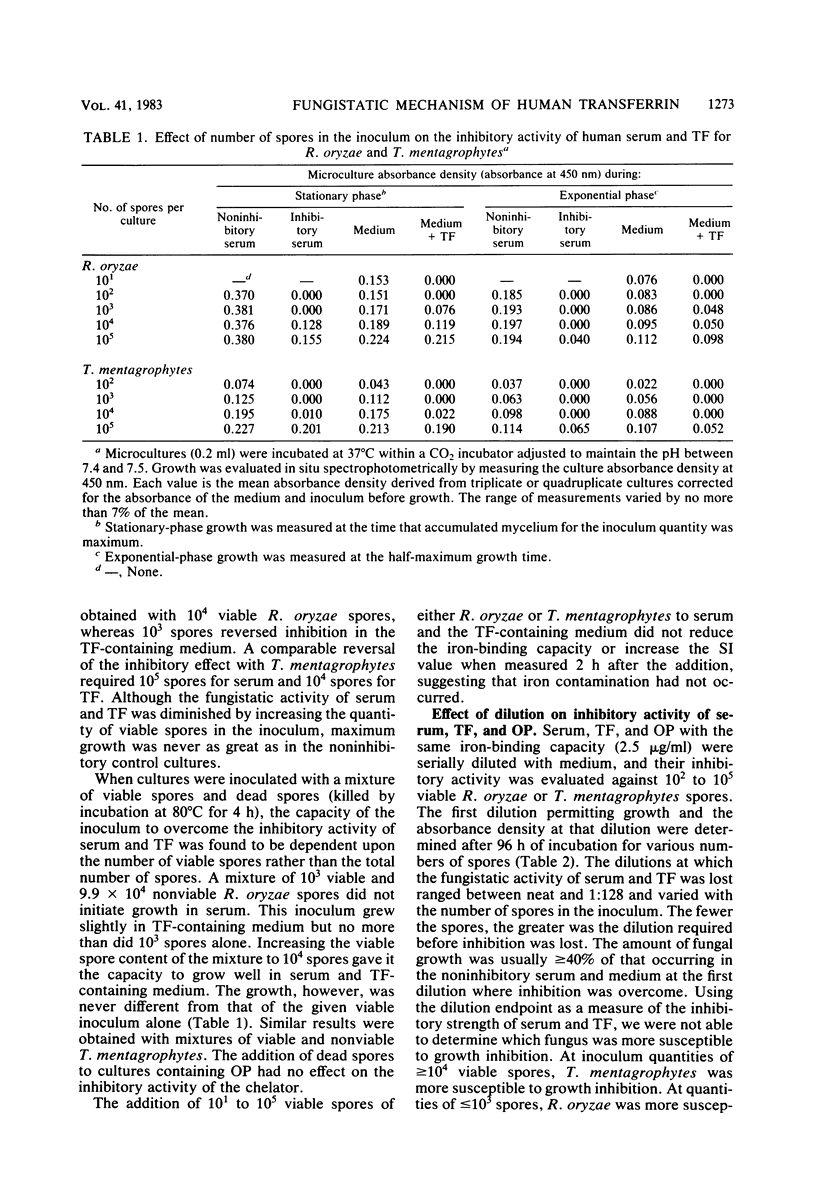
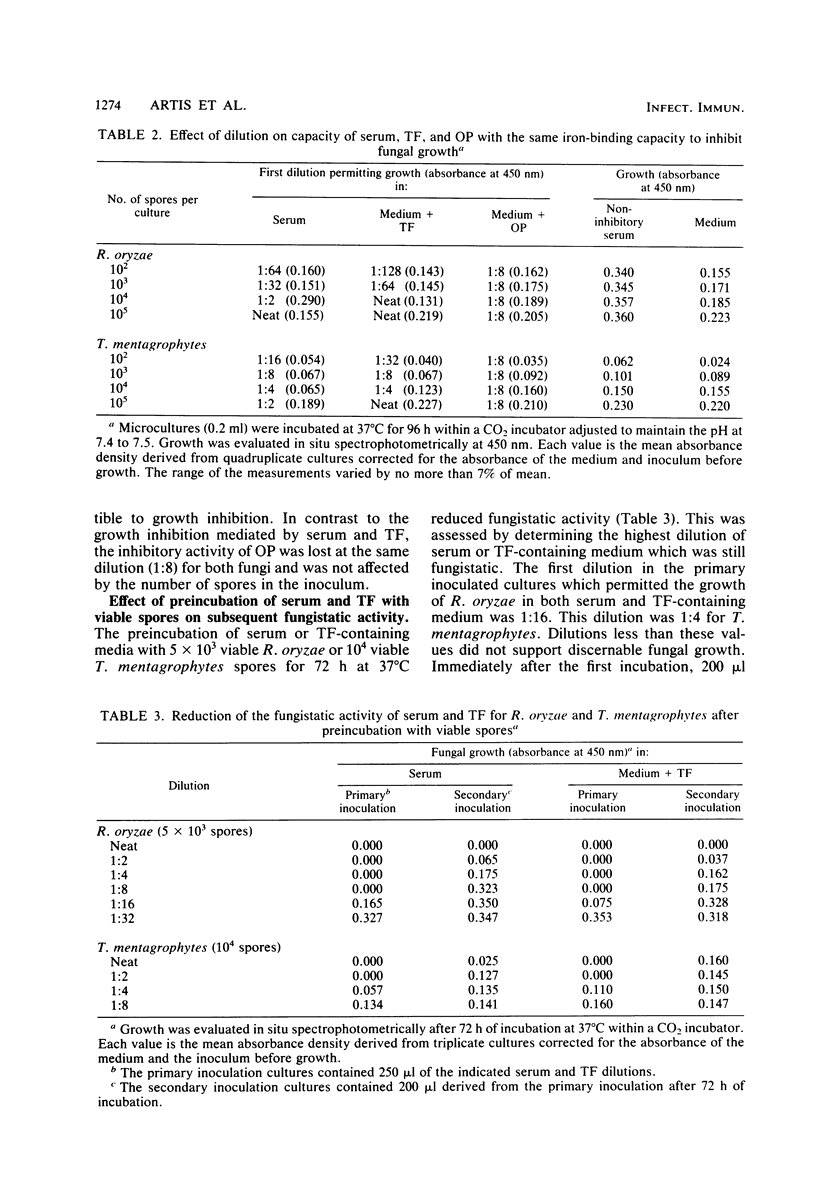
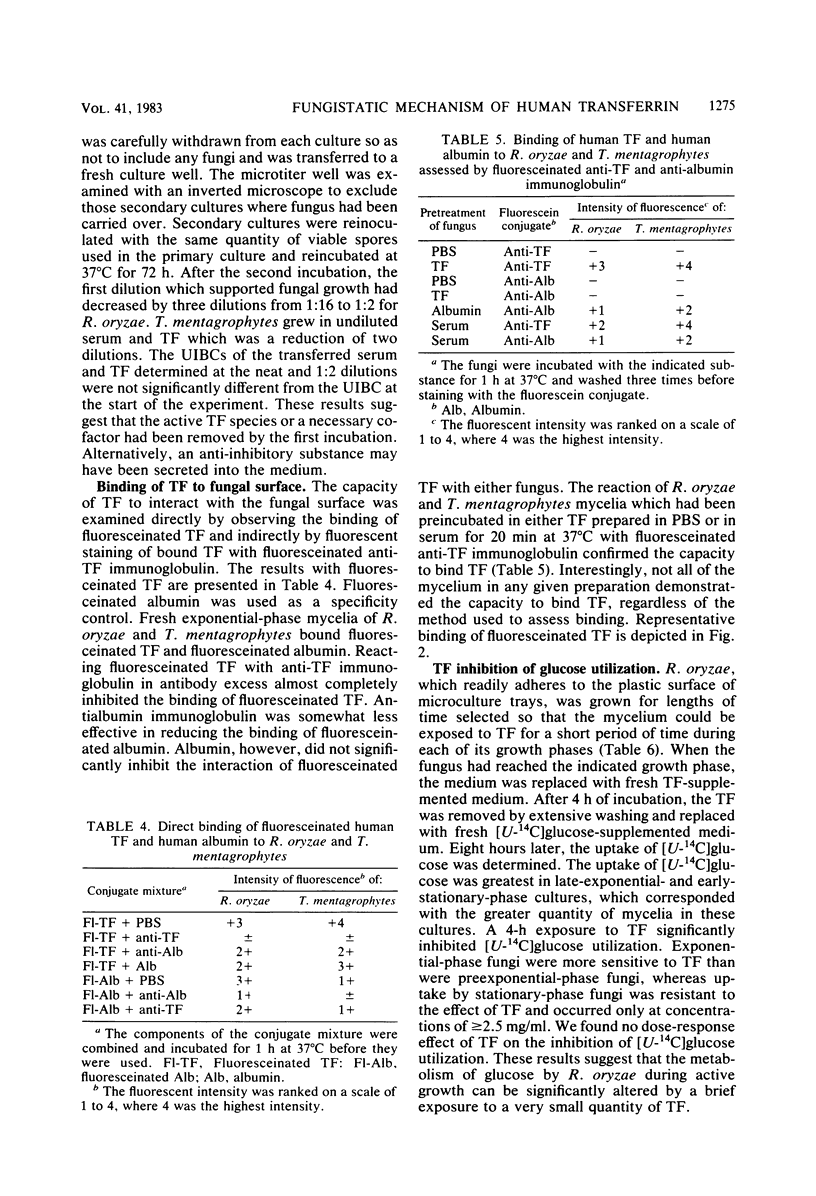
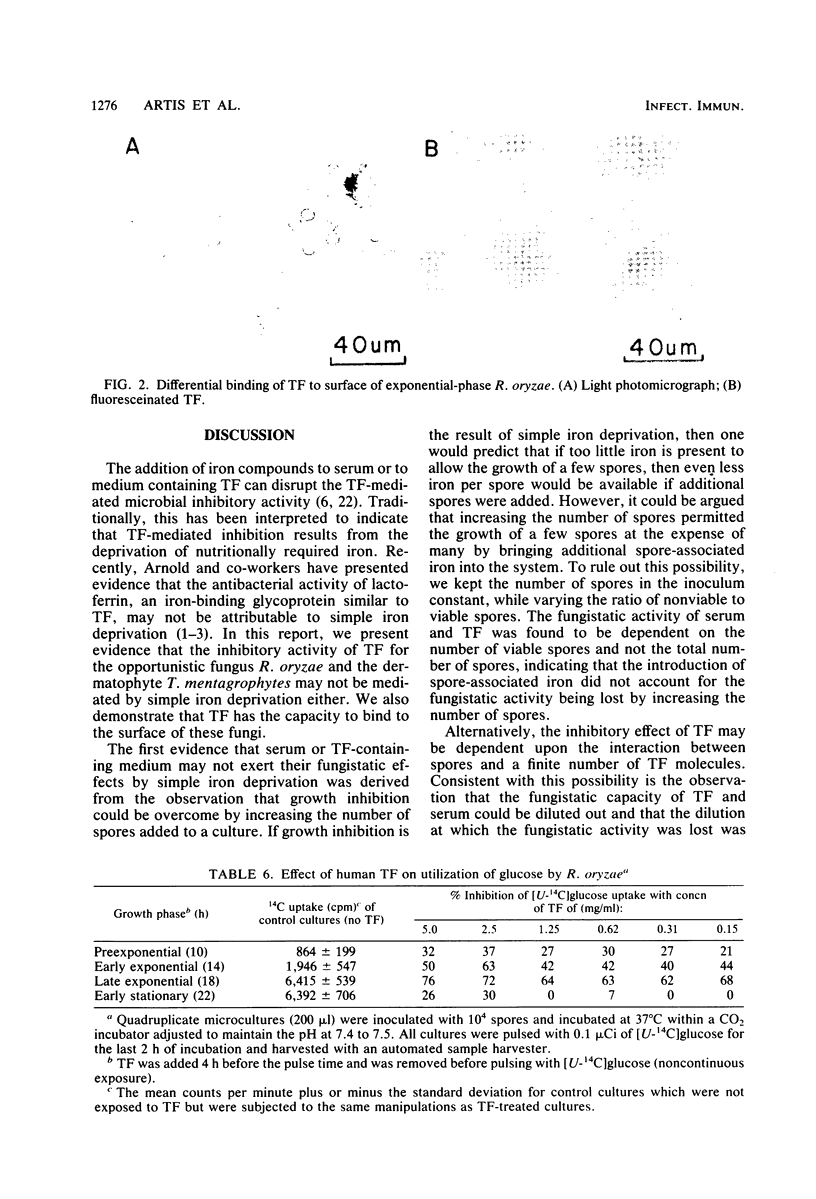
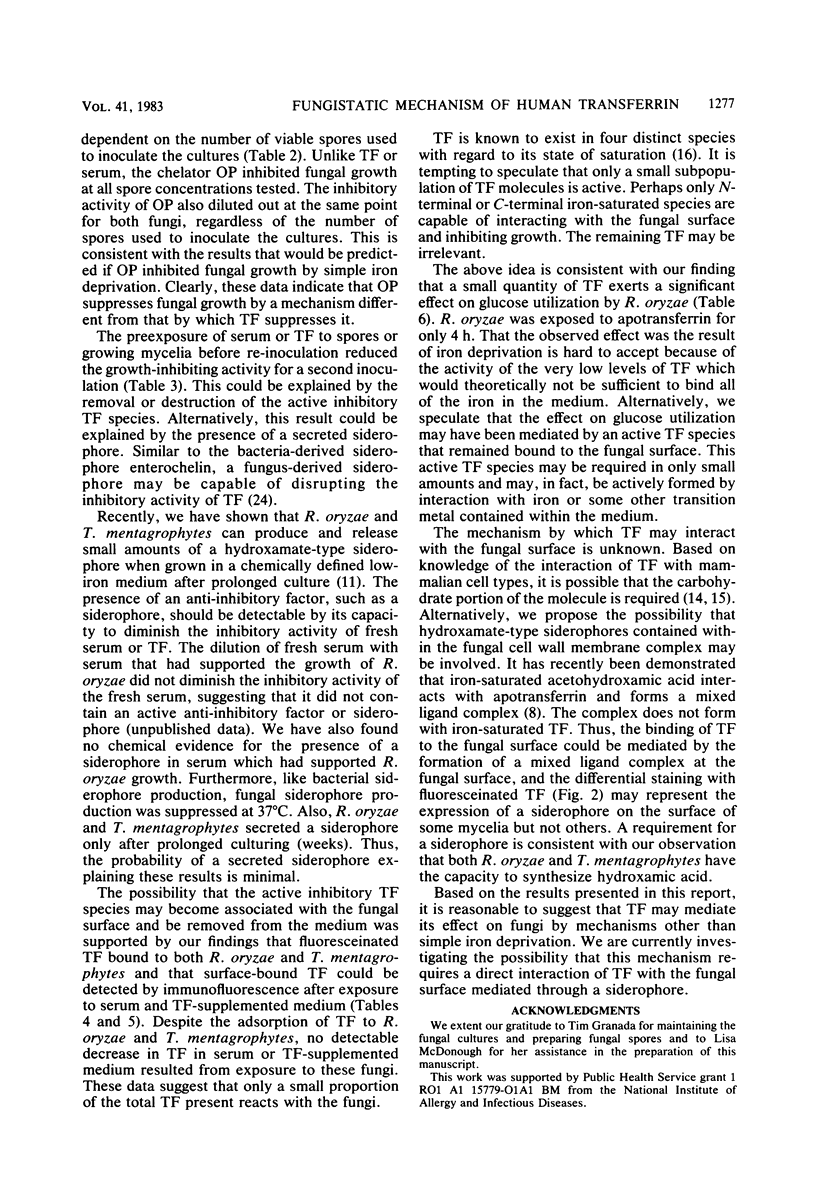
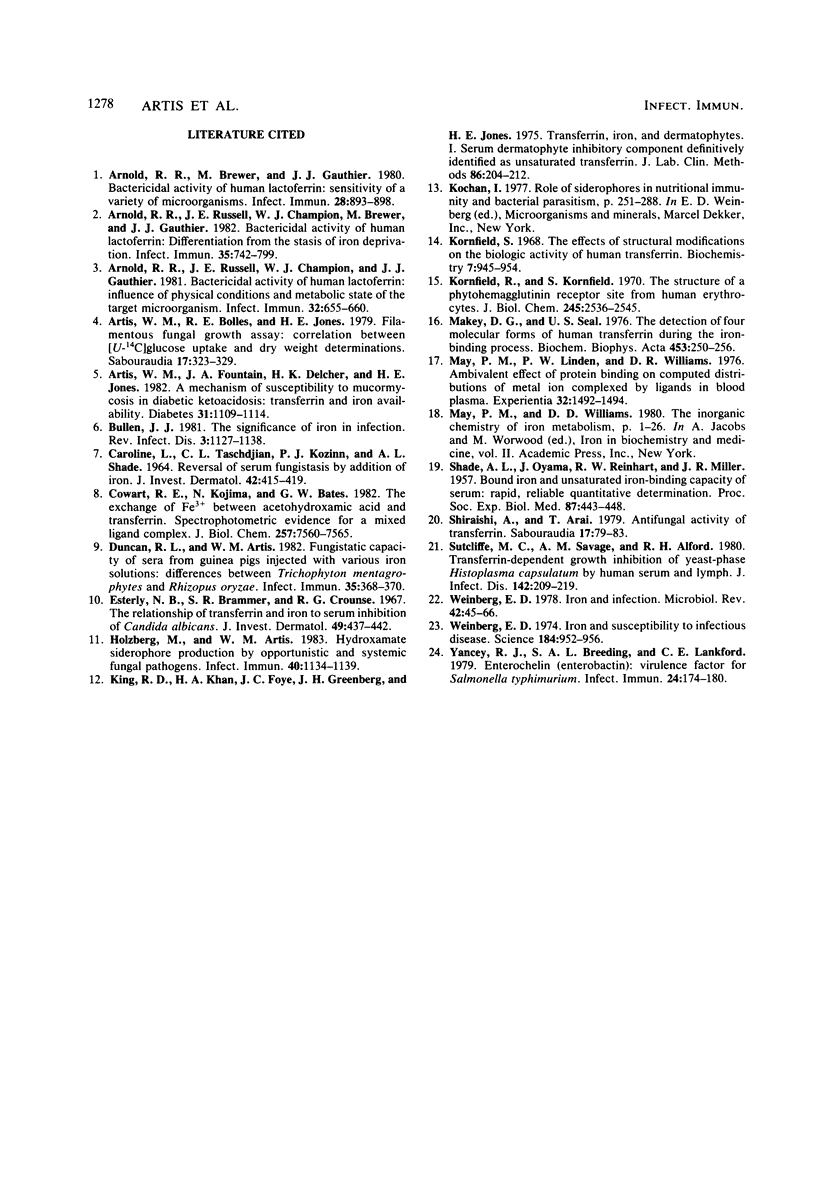
Images in this article
Selected References
These references are in PubMed. This may not be the complete list of references from this article.
- Arnold R. R., Brewer M., Gauthier J. J. Bactericidal activity of human lactoferrin: sensitivity of a variety of microorganisms. Infect Immun. 1980 Jun;28(3):893–898. doi: 10.1128/iai.28.3.893-898.1980. [DOI] [PMC free article] [PubMed] [Google Scholar]
- Arnold R. R., Russell J. E., Champion W. J., Brewer M., Gauthier J. J. Bactericidal activity of human lactoferrin: differentiation from the stasis of iron deprivation. Infect Immun. 1982 Mar;35(3):792–799. doi: 10.1128/iai.35.3.792-799.1982. [DOI] [PMC free article] [PubMed] [Google Scholar]
- Arnold R. R., Russell J. E., Champion W. J., Gauthier J. J. Bactericidal activity of human lactoferrin: influence of physical conditions and metabolic state of the target microorganism. Infect Immun. 1981 May;32(2):655–660. doi: 10.1128/iai.32.2.655-660.1981. [DOI] [PMC free article] [PubMed] [Google Scholar]
- Artis W. M., Bolles R. E., Jones H. E. Filamentous fungal growth assay: correlation between [U-14C] glucose uptake and dry weight determinations. Sabouraudia. 1979 Sep;17(3):323–329. doi: 10.1080/00362177985380471. [DOI] [PubMed] [Google Scholar]
- Artis W. M., Fountain J. A., Delcher H. K., Jones H. E. A mechanism of susceptibility to mucormycosis in diabetic ketoacidosis: transferrin and iron availability. Diabetes. 1982 Dec;31(12):1109–1114. doi: 10.2337/diacare.31.12.1109. [DOI] [PubMed] [Google Scholar]
- Bullen J. J. The significance of iron in infection. Rev Infect Dis. 1981 Nov-Dec;3(6):1127–1138. doi: 10.1093/clinids/3.6.1127. [DOI] [PubMed] [Google Scholar]
- CAROLINE L., TASCHDJIAN C. L., KOZINN P. J., SCHADE A. L. REVERSAL OF SERUM FUNGISTASIS BY ADDITION OF IRON. J Invest Dermatol. 1964 Jun;42:415–419. doi: 10.1038/jid.1964.90. [DOI] [PubMed] [Google Scholar]
- Cowart R. E., Kojima N., Bates G. W. The exchange of Fe3+ between acetohydroxamic acid and transferrin. Spectrophotometric evidence for a mixed ligand complex. J Biol Chem. 1982 Jul 10;257(13):7560–7565. [PubMed] [Google Scholar]
- Duncan R. L., Jr, Artis W. M. Fungistatic capacity of sera from guinea pigs injected with various iron solutions: differences between Trichophyton mentagrophytes and Rhizopus oryzae. Infect Immun. 1982 Jan;35(1):368–370. doi: 10.1128/iai.35.1.368-370.1982. [DOI] [PMC free article] [PubMed] [Google Scholar]
- Esterly N. B., Brammer S. R., Crounse R. G. The relationship of transferrin and iron to serum inhibition of Candida albicans. J Invest Dermatol. 1967 Nov;49(5):437–442. [PubMed] [Google Scholar]
- Holzberg M., Artis W. M. Hydroxamate siderophore production by opportunistic and systemic fungal pathogens. Infect Immun. 1983 Jun;40(3):1134–1139. doi: 10.1128/iai.40.3.1134-1139.1983. [DOI] [PMC free article] [PubMed] [Google Scholar]
- King R. D., Khan H. A., Foye J. C., Greenberg J. H., Jones H. E. Transferrin, iron, and dermatophytes. I. Serum dematophyte inhibitory component definitively identified as unsaturated transferrin. J Lab Clin Med. 1975 Aug;86(2):204–212. [PubMed] [Google Scholar]
- Kornfeld R., Kornfeld S. The structure of a phytohemagglutinin receptor site from human erythrocytes. J Biol Chem. 1970 May 25;245(10):2536–2545. [PubMed] [Google Scholar]
- Kornfeld S. The effects of structural modifications on the biologic activity of human transferrin. Biochemistry. 1968 Mar;7(3):945–954. doi: 10.1021/bi00843a010. [DOI] [PubMed] [Google Scholar]
- Makey D. G., Seal U. S. The detection of four molecular forms of human transferrin during the iron binding process. Biochim Biophys Acta. 1976 Nov 26;453(1):250–256. doi: 10.1016/0005-2795(76)90270-1. [DOI] [PubMed] [Google Scholar]
- May P. M., Linder P. W., Williams D. R. Ambivalent effect of protein binding on computed distributions of metal ions complexed by ligands in blood plasma. Experientia. 1976 Dec 15;32(12):1492–1494. doi: 10.1007/BF01924411. [DOI] [PubMed] [Google Scholar]
- SCHADE A. L., OYAMA J., REINHART R. W., MILLER J. R. Bound iron and unsaturated iron-binding capacity of serum; rapid and reliable quantitative determination. Proc Soc Exp Biol Med. 1954 Nov;87(2):443–448. doi: 10.3181/00379727-87-21407. [DOI] [PubMed] [Google Scholar]
- Shiraishi A., Arai T. Antifungal activity of transferrin. Sabouraudia. 1979 Mar;17(1):79–83. doi: 10.1080/00362177985380101. [DOI] [PubMed] [Google Scholar]
- Sutcliffe M. C., Savage A. M., Alford R. H. Transferrin-dependent growth inhibition of yeast-phase Histoplasma capsulatum by human serum and lymph. J Infect Dis. 1980 Aug;142(2):209–219. doi: 10.1093/infdis/142.2.209. [DOI] [PubMed] [Google Scholar]
- Weinberg E. D. Iron and infection. Microbiol Rev. 1978 Mar;42(1):45–66. doi: 10.1128/mr.42.1.45-66.1978. [DOI] [PMC free article] [PubMed] [Google Scholar]
- Weinberg E. D. Iron and susceptibility to infectious disease. Science. 1974 May 31;184(4140):952–956. doi: 10.1126/science.184.4140.952. [DOI] [PubMed] [Google Scholar]
- Yancey R. J., Breeding S. A., Lankford C. E. Enterochelin (enterobactin): virulence factor for Salmonella typhimurium. Infect Immun. 1979 Apr;24(1):174–180. doi: 10.1128/iai.24.1.174-180.1979. [DOI] [PMC free article] [PubMed] [Google Scholar]



